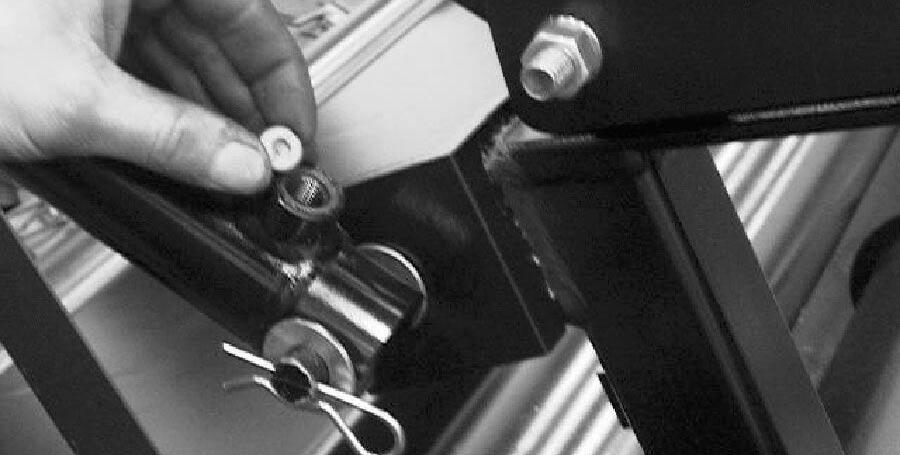
1 minute read
C) Bleed Hydraulics
from Claas Combine RAKE UP P420 LEXION RAKE UP P420MEDION MEGA Set-Up Instructions Manual - PDF DOWNLOAD
SECTION 2 – SET UP
b) Retry the holddown.
c) Check for improvement.
d) Repeat two times if required.
If this does not work, then replacing the orifice in the master cylinder may fix the problem.
a) Loosen and remove the hose at the bottom of the master cylinder. Keep rags handy to clean up leaking hydraulic oil. b) Loosen and remove the elbow from the bottom of the master cylinder.
c) Using a large bladed flat screwdriver, loosen and remove the orifice from inside the bottom port of the cylinder.
d) Install the 1/16-inch orifice in the bottom port. Do not over tighten.
e) Replace the elbow and the hose.
f) Bleed the hydraulics as described in the
Bleeding the Hydraulics.
g) Repeat two or three times as needed.
h) Check the overall operation of the holddown.
Installing the 1/16-inch diameter hole orifice will likely prevent the master cylinder from lagging. However in some instances it may cause the slave to remain up as in Problem 1. If this is the case, repeat steps a) to f) with the 3/64 inch diameter hole orifice.
Orifice Installation
C) Bleeding of Hydraulics
In order for the hydraulics to perform properly, all or most of the air must be removed from the system. The following procedure provides the easiest method of bleeding the hydraulics. The hydraulics should be bled after initial installation, if the unit has sat for a significant period of time, and if adjustments are needed to the hydraulics.
CAUTION: High-pressure
hydraulic oil can cause serious injuries such as burns, cuts, and tissue damage! Always take precautions when working with hydraulic oil. Wear safety goggles, gloves and thick clothing. Seek immediate medical attention if cut or burnt.
a) The holddown is controlled using the reel lift control located in the combine cab. Fully raise the holddown.
b) Engage the holddown safety locks. Ensure that the lock is fully rotated over center so that it will not slip forward.
c) Lower the hold down so that it comes to rest on the safety locks. (This serves to relieve the hydraulic pressure in the lines).
d) Hold the plastic pail so the lip of the pail is underneath the bleed plug. A stream of oil shooting out of the plug should go in the pail.



